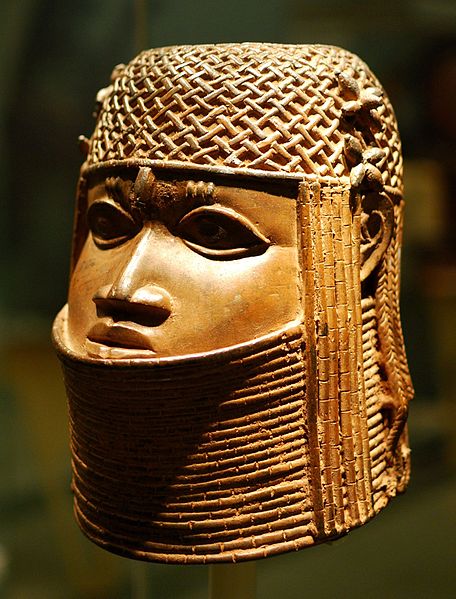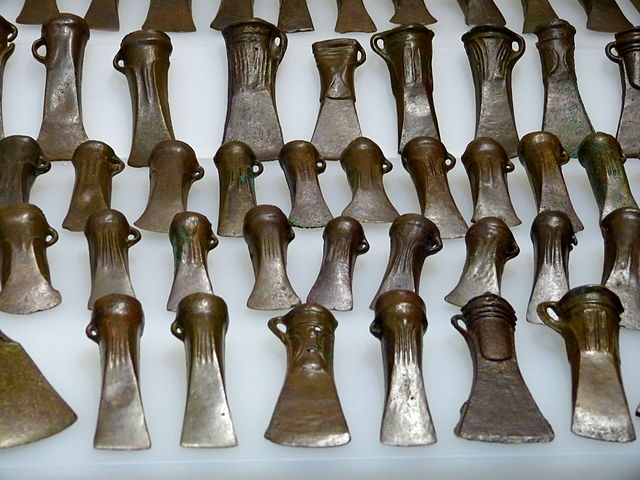Bronze is the most popular metal for cast metal sculptures; a cast bronze sculpture is often called simply "a bronze". It can be used for statues, singly or in groups, reliefs, and small statuettes and figurines, as well as bronze elements to be fitted to other objects such as furniture. It is often gilded to give gilt-bronze or ormolu.
The Victorious Youth (between 4th-2nd centuries BC), is a rare, water-preserved bronze from ancient Greece.
Chinese ritual bronze, a Late Shang dǐng.
Benin bronze of a woman's head.
Gilt-bronze doors of the Baptistry of Florence Cathedral (Lorenzo Ghiberti, 1401–22).
Bronze is an alloy consisting primarily of copper, commonly with about 12–12.5% tin and often with the addition of other metals and sometimes non-metals, such as phosphorus, or metalloids such as arsenic or silicon. These additions produce a range of alloys that may be harder than copper alone, or have other useful properties, such as strength, ductility, or machinability.
Houmuwu ding (Chinese: 后母戊鼎; pinyin: Hòumǔwù dǐng), the heaviest Chinese ritual bronze ever found; 1300–1046 BC; National Museum of China (Beijing). This ding's name is based on the inscription in the bronze interior wall, which reads Hòumǔwù, meaning 'Queen Mother Wu'
Hoard of bronze socketed axes from the Bronze Age found in modern Germany. This was the top tool of the period, and also seems to have been used as a store of value.
Roman bronze nails with magical signs and inscriptions, 3rd-4th century AD.
Bronze bell with a visible crystallite structure.








